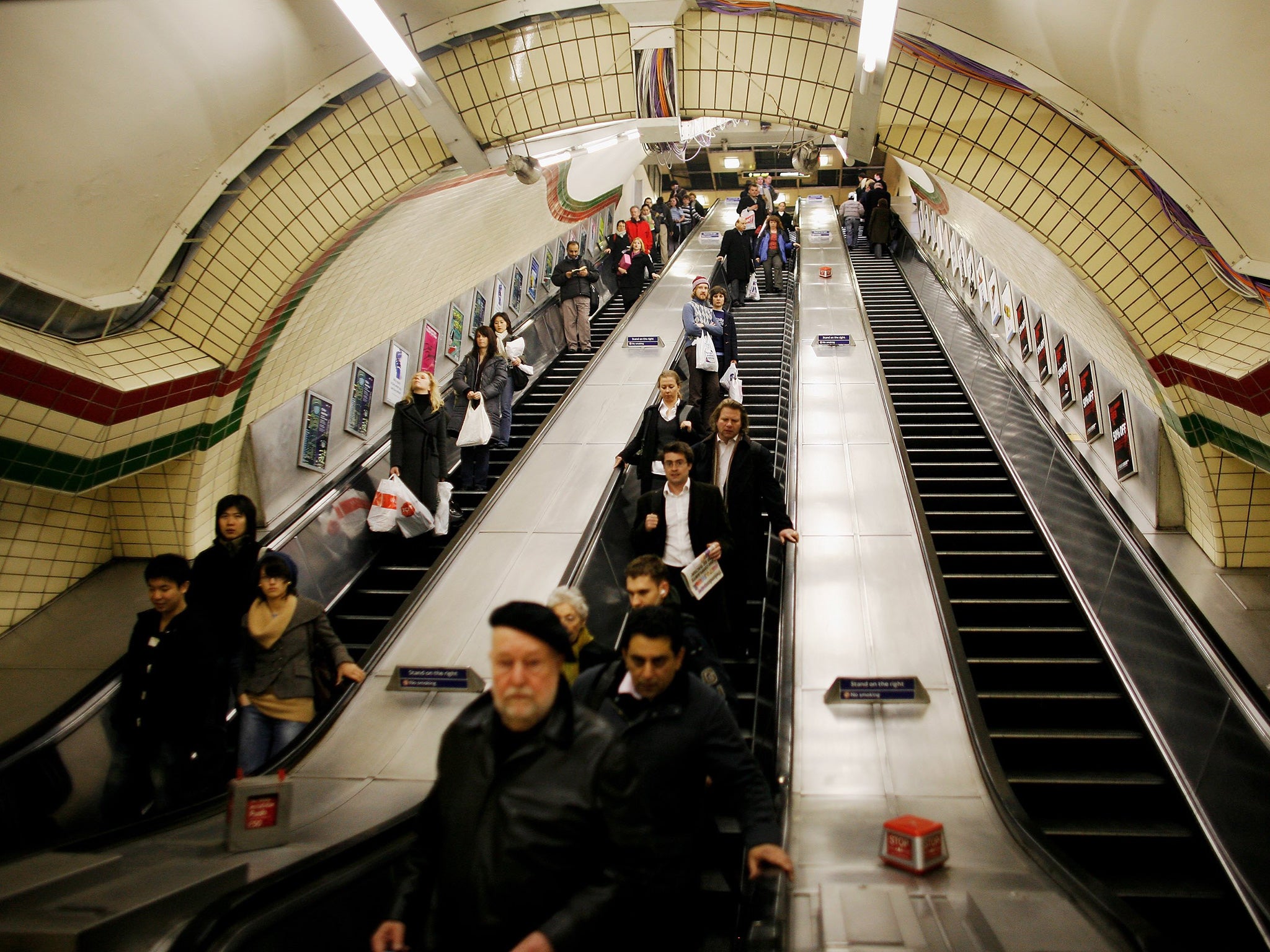Holborn: London Underground etiquette scrapped for station's standing only escalators
Station managers believe that instructing people not to walk up the escalators will speed the arduous rush hour process up

Everybody knows the tube etiquette that escalator passengers must stand on the right, leaving the left-hand side free for walkers. But now Transport for London has started a commuter revolution by telling passengers to stand on both sides in a bold bid to ease congestion.
Rush-hour passengers at Holborn station found themselves greeted by staff members with megaphones, stationed at the bottom of one of the up escalators, ordering them to stand on both sides.
Station managers believe that instructing people not to walk up the escalators will have the result of smoothing the flow of people out of the station, which serves 56m passengers each year.
The move is part of a three-week trial at Holborn, one of the underground network’s busiest interchanges, to see if requiring passengers to remain stationary will reduce bottlenecks and speed up their departure through the restricted street exit area.
Ripping up the rules which have kept the underground system moving for more than a century produced a mixed response from passengers. “Commuters look mortified,” tweeted one observer. Another described the experiment as “insane”.
“London commuters could not be more out of their comfort zone,” wrote one participant as supervisors valiantly attempted to enforce the new rules on disbelieving passengers. Others welcomed a “fascinating experiment” designed to improve their journey speed.
Peter McNaught, Operations Director for the Central line, said: “Holborn station is one of the busiest on the Tube network, experiencing high demand in both the morning and evening peaks. As part of a three-week trial to reduce queues and keep people moving through the station, we are encouraging customers to stand on both sides of the ‘up’ escalators during busy periods.
“We believe this will increase the capacity of the escalators as more people will be able to board, preventing queuing at the bottom of the escalator.”
Whilst some hailed a “victory for the left”, it appears the experiment may not have widespread application. Holborn was chosen because of its lengthy, 23.4 metre long, escalator leading up to the ticket hall.
As a result most commuters avoid the steep climb and choose to stand on the right, causing congestion at the bottom, whilst the left-hand side of the escalator remains largely free of footfall. Forcing everyone to stand might inconvenience the minority of walkers but TfL believes it will nearly double the number of people using the escalators and get everyone to the surface quicker.
A spokesman added: “To keep up with demand, we have a plan to upgrade the station with a new entrance and an enlarged ticket hall, which will boost capacity by 80 per cent by 2022.”
Gallery: 150 years of London underground
Show all 27By midday however the megaphoned supervisors were not present and Holborn commuters ignored signs asking them to stand on both sides, with the left side under-populated apart from the small number taking the healthy option to walk up.
In London, an estimated 25% of Tube users actually walk on the escalators. Research in 2011 by the University of Greenwich found that 75% of people at Paddington Tube station stood. The left-right “rule” was observed by nearly 90% of people.
The international picture is mixed. In Shanghai the figure for subway escalator walkers falls to 3%. Signs that encouraged people to walk on the left were removed at the recommendation of safety experts on the Toronto underground system. An escalator walking ban was considered for Tokyo's transport system but never enforced.
Subscribe to Independent Premium to bookmark this article
Want to bookmark your favourite articles and stories to read or reference later? Start your Independent Premium subscription today.

Join our commenting forum
Join thought-provoking conversations, follow other Independent readers and see their replies